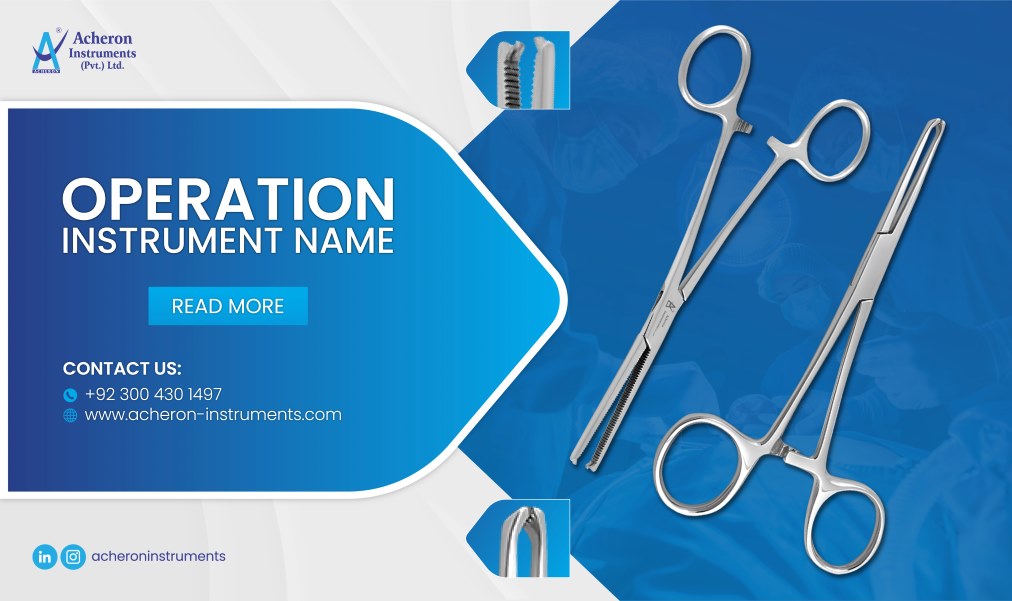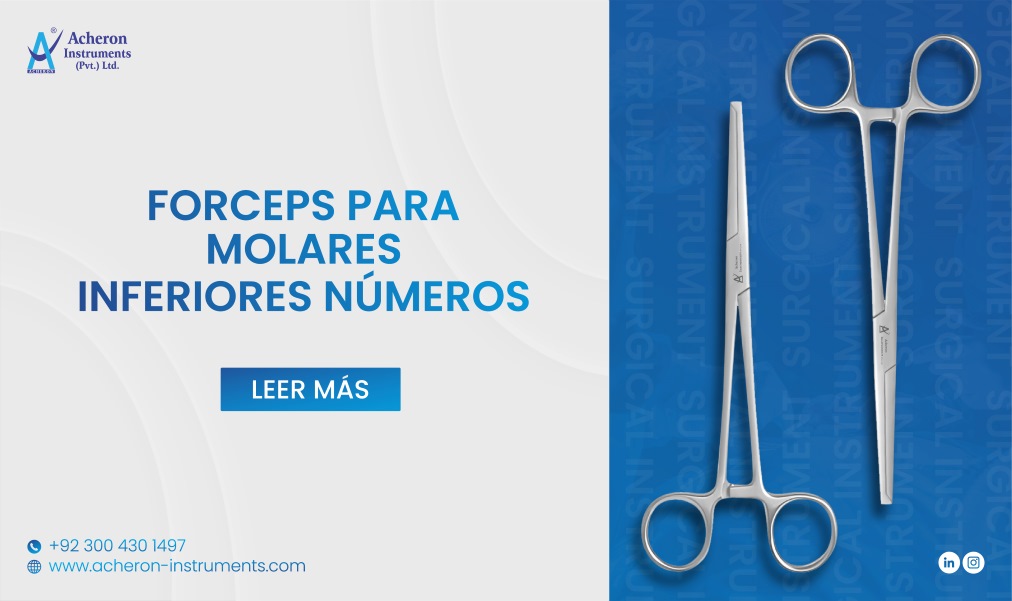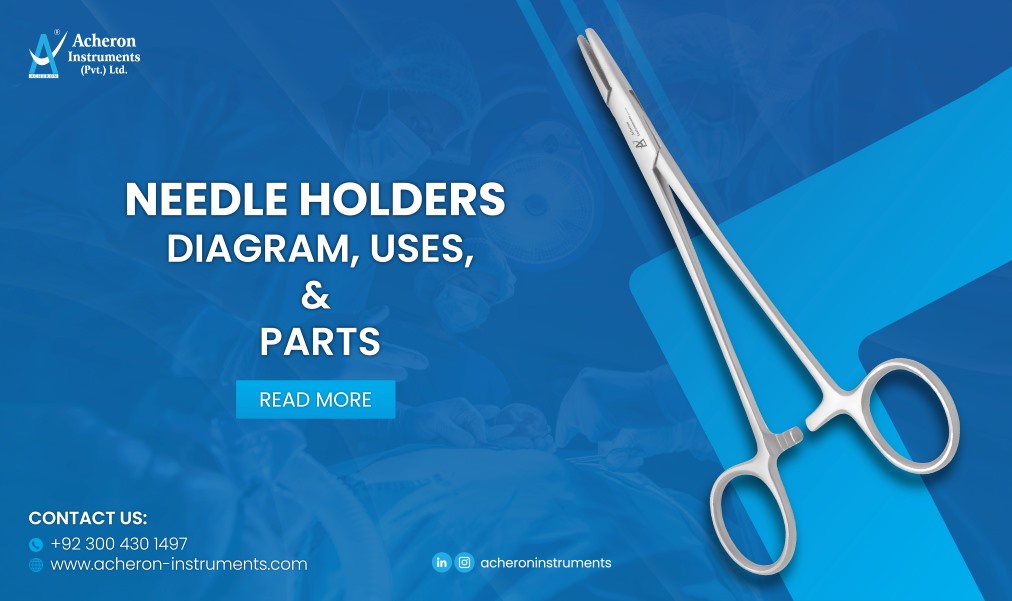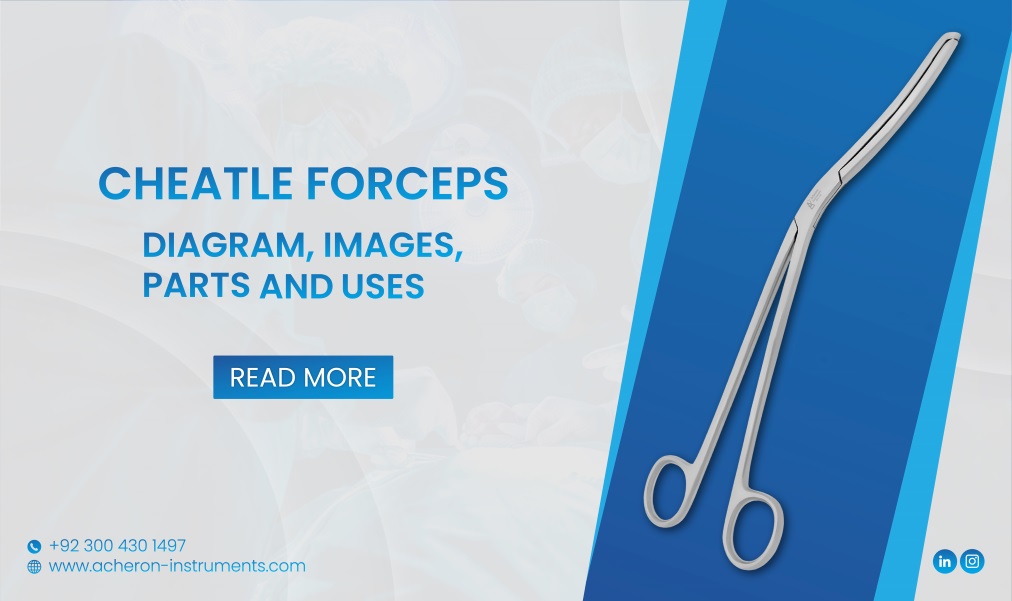Surgical instruments are the backbone of modern medicine, embodying the essence of precision and advancement in healthcare. They're the specialized tools that surgeons rely on to do their jobs with precision and care. These instruments are crucial because they make surgeries safe and successful, and ultimately improve patient outcomes. Kelly forceps are vital tools in medicine and surgery, showcasing the precision required in healthcare. Their delicate yet strong design reflects the expertise of medical professionals. These forceps are versatile and essential instruments, employed in a wide range of medical procedures and applications. Their design, with distinctive serrated jaws and a locking mechanism, allows for a secure and controlled grip on delicate tissues and structures, making them an indispensable asset during surgical interventions.
Understanding the pivotal role of Kelly Forceps in healthcare, we are committed to ensuring that our instruments meet the highest standards, supporting the skilled hands of medical professionals. Also, our commitment to excellence shines through in the detailed design and engineering of these forceps, and we intend to provide unmatched precision and consistent reliability in all medical procedures.
Understanding Kelly Forceps
Surgeons use Kelly forceps, also referred to as Kelly hemostatic forceps, to grasp, clamp, and hold tissues or blood vessels in various medical procedures. Their distinctive design includes serrated jaws and a locking mechanism, enabling them to maintain a secure grip on tissues or vessels. In surgical settings, medical professionals frequently employ these forceps to control bleeding during procedures, especially in critical surgical fields such as vascular surgery where hemostasis is essential. They come in various sizes and designs, making them versatile tools for different surgical applications. These forceps are named after Howard Atwood Kelly, a prominent American gynecologist and surgeon in the late 19th and early 20th centuries.
Design
Kelly forceps feature a pair of tapered jaws for attaining better access to the surgical areas. Additionally, these forceps also ensure a steady grip as the inner surfaces of the jaws comprise transverse serrations. Both straight and curved variations are available to suit different surgical scenarios. However, the curved pattern is most suitable for reaching the deeper tissues of the body as compared to the straight patterned forceps. They also have a pair of ergonomically designed finger rings that prevent accidental slippage and provide maximum control over the tool.
Specifications
- Kelly forceps can be used as a heat sink, clamp, or third-hand
- They are available in both straight and curved variations to help surgeons in multiple surgeries
- They comprise a locking ratchet mechanism with wider finger rings that allow a firm grip and easy handling of the instrument
- Medical professionals can use them effectively in situations where there is a need to block hemorrhaging blood vessels.
- There is a partial serration on the curved and straight patterned jaws of the instruments that may allow for blunt dissection
- The length of these forceps ranges from 5” to 6” and come in color-coated variations too

Types of Kelly Forceps
Kelly forceps come in different types and sizes to cater to various surgical needs. The primary distinction among these types lies in the length and curvature of the forceps' jaws. The most common types include:
- Straight Kelly Forceps: Surgeons often use these forceps with straight jaws for general surgical purposes, especially when a straight-line approach to tissue or vessels is necessary.
- Curved Kelly Forceps: These feature jaws with a gentle curve, making them suitable for procedures where the surgeon needs to access and manipulate tissues or vessels around curves or corners.
- Baby Kelly Forceps: Medical professionals often use these forceps in pediatric or delicate surgical procedures, where precision and a smaller grip are essential.
- Rankin Kelly forceps: Surgeons use these forceps to handle and secure large and fatty tissues during a range of surgical procedures. Surgeons use these instruments in various surgical procedures to clamp and manipulate large tissues, often referred to as hemostat clamps. The serrated and curved jaws of this type allow a firm grip over the fatty tissues.
- Standard Kelly Forceps: Medical professionals most commonly use this type, which features slightly curved jaws and a locking mechanism. They are versatile and suitable for a wide range of surgical applications.
- Halsted-Kelly Forceps: These forceps have a more pronounced curve in the jaws, making them suitable for accessing and controlling deeper tissues or vessels.
Surgeons choose among these forceps types based on their preferences and the procedure's nature. This is because each is designed to meet specific surgical needs.
Benefits of Acheron Instruments' Kelly Forceps
Acheron Instruments' Kelly forceps are distinguished by their exceptional features and benefits. Crafted from premium German stainless steel, these forceps guarantee durability and resistance to corrosion, ensuring long-term reliability. Additionally, our forceps meet rigorous industry standards, assuring consistent, reliable performance in surgical procedures. Moreover, these forceps enable precise manipulation of tissues and vessels, providing a secure grip without causing unnecessary tissue trauma.
Difference between Kelly forceps and Crile forceps
Kelly and Crile forceps both resemble the design and the length of both forceps is 5 ½” However, both these instruments are different and should not be substituted. Let’s have a look at the difference between these two tools:
- Kelly hemostat forceps have half-serrated jaws whereas, Crile forceps have fully-serrated jaws
- Crile forceps are non-toothed forceps and are used in different surgical procedures than the Kelly forceps
Applications and Usage:
Kelly forceps are versatile instruments with a wide range of applications in healthcare, spanning surgery, wound care, and various medical interventions. Their utility lies in their ability to enhance procedural efficiency and patient safety through the following diverse applications:
Surgical Procedures: Surgeons use these forceps as fundamental tools in surgery, employing them for the delicate manipulation of tissues and blood vessels. They rely on these tools during procedures such as vascular surgery, plastic surgery, and general surgery to grasp, hold, or clamp tissues with precision.
Tissue Dissection: These forceps are useful for separating and dissecting tissues, making them indispensable in procedures like wound debridement.
Hemostasis: In surgery, controlling bleeding is primarily important. These forceps play a crucial role in achieving hemostasis by securely clamping blood vessels. This ensures that the surgeon can work in a blood-free field, making the procedure safer and more efficient.
Suturing: These forceps are often used to hold tissues together during the suturing process. Moreover, they assist in aligning tissue edges accurately, which is essential for achieving neat and effective wound closure. This not only enhances the efficiency of suturing but also promotes better wound healing.
Emergency Care: In emergency medicine, these forceps find application in tasks like foreign body removal or wound exploration. Also, their precision and secure grip are vital in these situations, ensuring efficient and safe patient management.
Material
High-grade German stainless steel material makes up these forceps, rendering the instrument durable and robust. They can be easily steam sterilized and require low maintenance. Also, they are easy to hold due to their unique design and are lightweight.
Wrap up
Kelly forceps hold prime importance in multiple surgical procedures for clamping blood vessels. We have a vast range of Kelly forceps to cater to various surgical practices. Our products are carefully crafted by using advanced methods and highly qualified technicians. Furthermore, the fine quality German stainless material makes these instruments stable and strong for longer durations. Acheron Instruments has earned a reputation as a respected manufacturer in the industry, further instilling confidence in the quality and performance of their instruments. You can visit our website to have a closer look at our high-quality instruments with impeccable features. Explore our versatile range today for surgical tools that healthcare professionals trust and rely on!
FAQ’s
Are there different types of Kelly forceps?
Yes, there are various types of Kelly forceps with slightly different designs. Some have straight jaws, while others have curved jaws, and there are smaller versions too. The specific type chosen depends on the surgical requirements.
What is the locking mechanism on Kelly forceps for?
These forceps feature a locking mechanism that secures them in a closed position, ensuring a firm grip on tissues or vessels. This feature is vital for maintaining tissue or vessel integrity during procedures.
What are the key differences between Kelly forceps and other types of surgical forceps?
Kelly forceps stand out from other surgical forceps due to their serrated jaws equipped with a locking mechanism. This enables their versatile use in the delicate manipulation of tissues and blood vessels.
Why choose Acheron Kelly forceps?
Choose Acheron Kelly forceps for their premium German stainless steel construction and precision engineering. Also, we strictly adhere to industry standards, therefore our instruments are versatile and durable. These factors ensure reliable performance, enhance surgical precision, and promote patient safety.
Is it possible to sharpen or repair these forceps if they become dull or damaged?
Typically, medical professionals replace these forceps if they become dull or damaged, as they are intricate instruments. Attempting to sharpen or repair them may compromise their functionality and safety.
What is the locking mechanism on Kelly forceps for?
These forceps feature a locking mechanism that secures them in a closed position, ensuring a firm grip on tissues or vessels. This feature is vital for maintaining tissue or vessel integrity during procedures.








